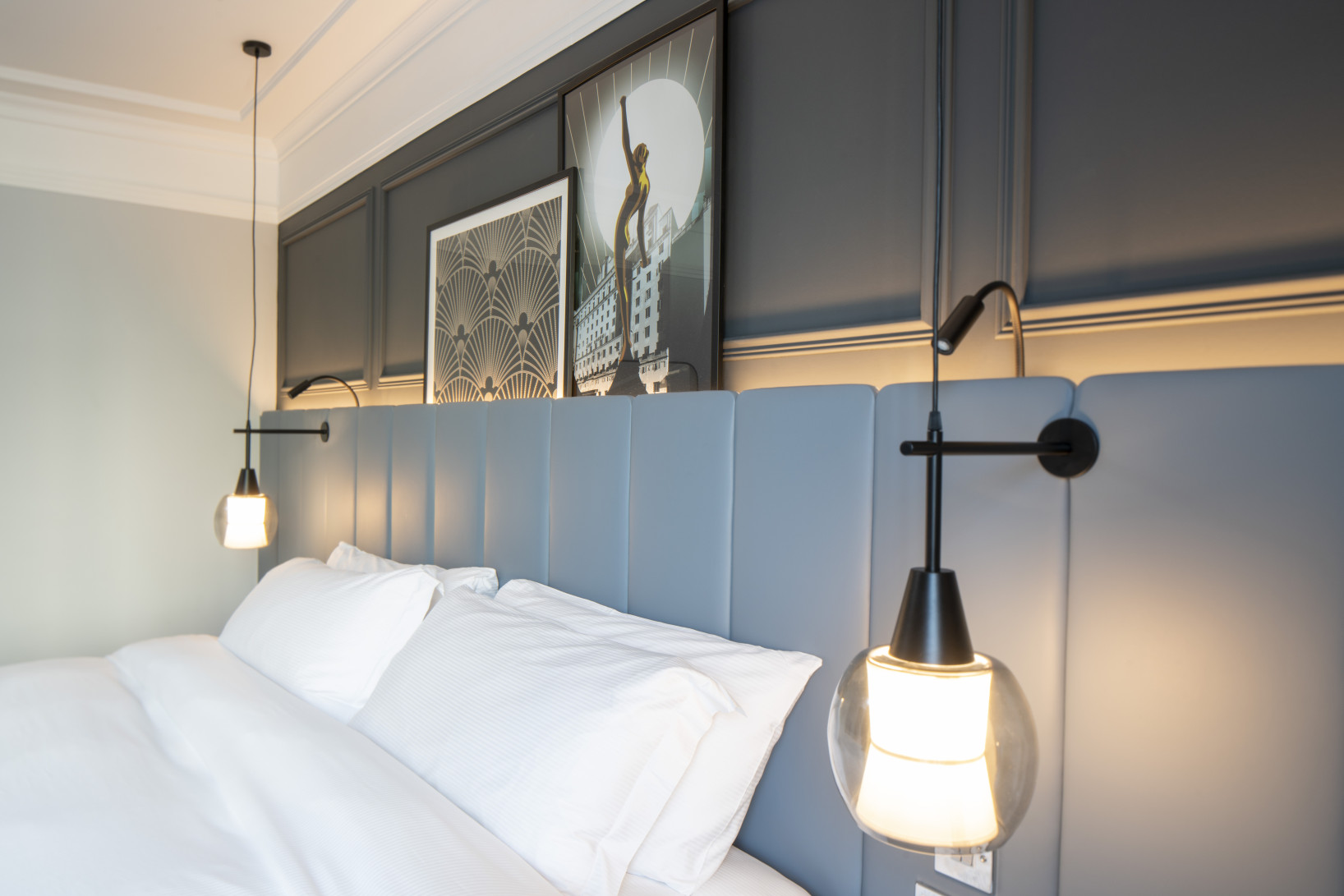Trends Opinion Piece
21 August 2023

Hotel bedrooms are having to adapt to perform other functions apart from sleeping spaces. Andrew Reynolds, managing director of Leeds-based hotel bedroom furniture manufacturers Curtis, looks at the why and how for designers and manufacturers.
Hoteliers are now looking at what their guests require from a space during the day and evening, and for extended stays. Hotel rooms are having to become an environment that caters for the guest beyond the night, with features such as larger wardrobes, comfortable lounging furniture, and kitchens.
Often with only a small amount of additional space, but with effective use of lighting and screening, hotels are providing a relaxing sitting area from which the guest can either watch TV or work. Often this takes the form of a sofa bed to add further flexibility and family living, or a large easy chair and footstool.
Likewise, improvements in wi-fi coverage, diminishing laptop sizes, and not least, the demise of the pen and paper, mean the traditional writing desk is becoming smaller and more mobile, with handles for lifting and moving around the room. This is often substituted completely for a laptop table which can easily be positioned anywhere in the room.
The final element in tempting guests into longer visits and the feeling that they are literally in a home from home, and not obliged to fork out on eating out every night, is the kitchen, and given space, this is increasingly being incorporated into the bedroom. These kitchens typically include a sink, fridge, microwave oven and hob as the minimum. Some also feature dishwashers and conventional ovens.
A well designed, and independently lit, hotel bedroom kitchen complements the aesthetic of the bedroom furniture while providing its own (ventilated) environment to prepare anything from a cappuccino to egg and cheese on toast (my favourite!). This area, perhaps more than any other in a hotel bedroom, even the en-suite, must provide function as well as form.
So, as a hotel bedroom becomes more multi-functional, its planning and manufacture become even more challenging. Perhaps that is why experienced hotel furniture manufacturers are being called on by interior designers to become involved sooner in the design of these spaces, and why contractors and specifiers are increasingly looking for suppliers who can offer expertise in all of the new requirements – relaxed seating, screening, and kitchens and integrated appliances.
This increasingly collaborative process can be eased when all of these types of hotel furniture are prototyped and manufactured in the UK, which also helps on the sustainability front by reducing “furniture miles” and carbon emissions compared with shipping from Europe or Asia.
In addition, this close collaboration becomes even more coveted in the particularly challenging conversion of period properties which often require more site visits by the design and manufacturing team than new-build projects.
For example, the first The Other House in South Kensington has been redeveloped from 11 historic townhouses, and the first West London Locke, also in Kensington, retains its original Victorian features including arched windows and sloping eaves, the latter requiring a bespoke kitchen design for each of the 120 rooms.
